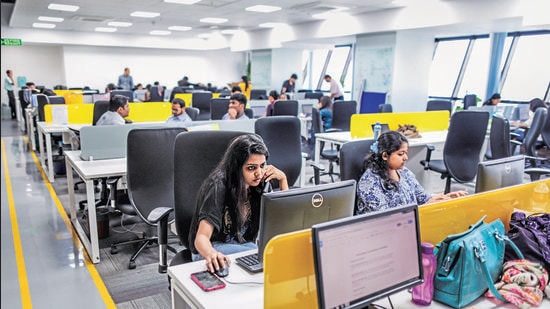Pulp-It | After WFH, it is time for a BTW strategy
Apart from detailing the logistics of WFO, the Back To Work strategy should include reorientation sessions, communicating an updated employee health policy, and activities (Covid-safe ones, of course) that emphasise team work and fun
For 20 months now, columnists have been writing about how work from home (WFH) has skewed work-life balance sharply towards work, and how the distinction between work-time and non-work time has been blurred by remote (and online) working and the absence of a commute. The refrain has been about how everyone is always expected to be available.

Now, as companies around the world, and in India, reopen – Omicron has caused a stutter right now, and one hopes it will be just that – managers are discovering that there is another problem: Some people do not want to return to office (and are leaving if pushed to return); and some of those who do return, actually seem to have forgotten how to work.
There is much in favour of remote work. For one, there’s the absence of the commute (and this is simply sapping in many cities in India). For another, there’s almost no chance of being distracted by others at work (coffee breaks; water cooler gossip; pre- and post-meeting socialising are all out). For focused tasks, especially those that do not require teamwork, there are few things that beat WFH – but only for some kinds of Hs, where both the physical and social space are conducive to work.
But there is another side to the story. The argument that WFH means work taking over life is only as valid as the one of life taking over work. Life sometimes infiltrates the blurred boundary between work and life – just as work sometimes does. And the absence of physical interaction with colleagues and the workplace itself could end up alienating (at worst) or distancing (at best) people from their organisations – making them poor team players and also making it easy for them to just up and leave.
It is indeed true that some people choose to move on because pandemic-enforced WFH has taught them what’s really important, made them more self-aware, and also helped them understand the true value of what they do. It is also true that not all organisations have displayed genuine concern for their employees; some have just viewed them as costs that need to be reduced (especially during the lockdown when revenues across the board took a hit), others, as contractors performing a certain task, not valued stakeholders. Finally, it’s important to acknowledge that the pandemic has taken a heavy toll — affecting the physical and mental health of individuals and the financial health of families.
All of this means it will not be easy to return to business as usual. And all of this points to the need for companies to have a BTW (back to work) strategy. Apart from detailing the logistics of WFO and the Covid-19 safety protocols that the workplace will follow, this should include reorientation sessions, evolving and communicating an updated employee health policy, and activities (Covid-safe ones, of course) that emphasise team work and fun. After 20 months of working from home, people may still be engaged with their work, but few are engaged with their organisations. That’s the challenge companies and managers need to address. It’s almost as difficult as orienting recruits fresh out of college who have never worked before – it isn’t the job they have to get used to as much as the concept of work.
R Sukumar is the editor-in-chief of Hindustan Times
Pulp-it is a weekly column for HT Premium subscribers
The views expressed are personal
All Access.
One Subscription.
Get 360° coverage—from daily headlines
to 100 year archives.



HT App & Website






